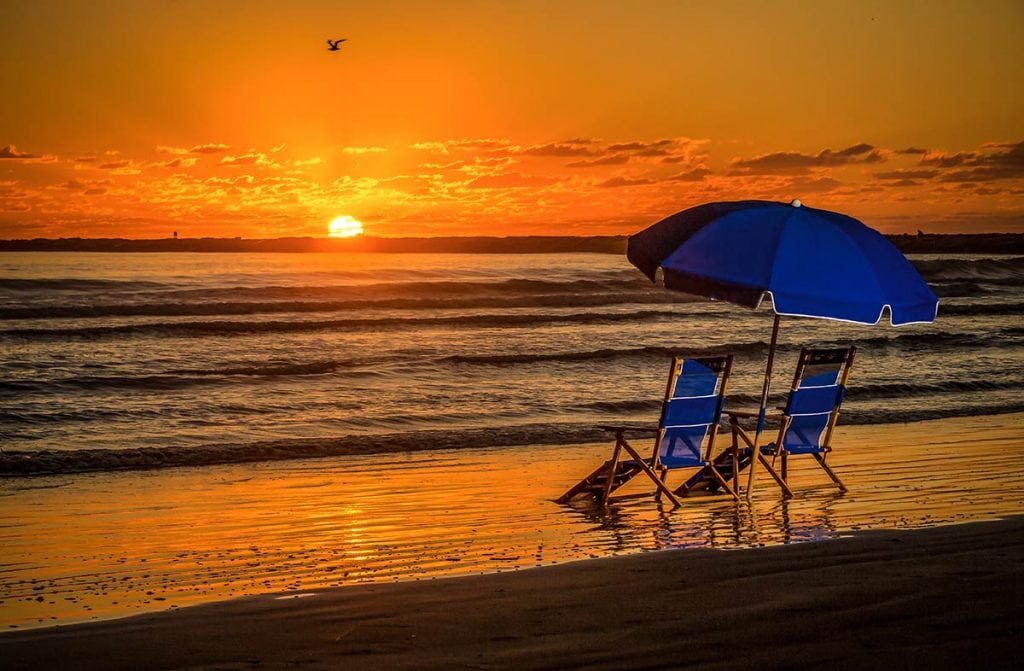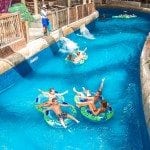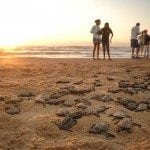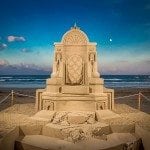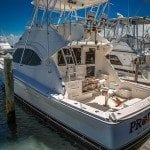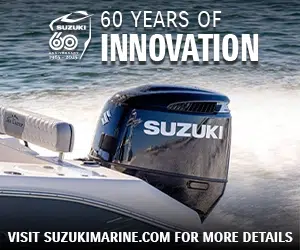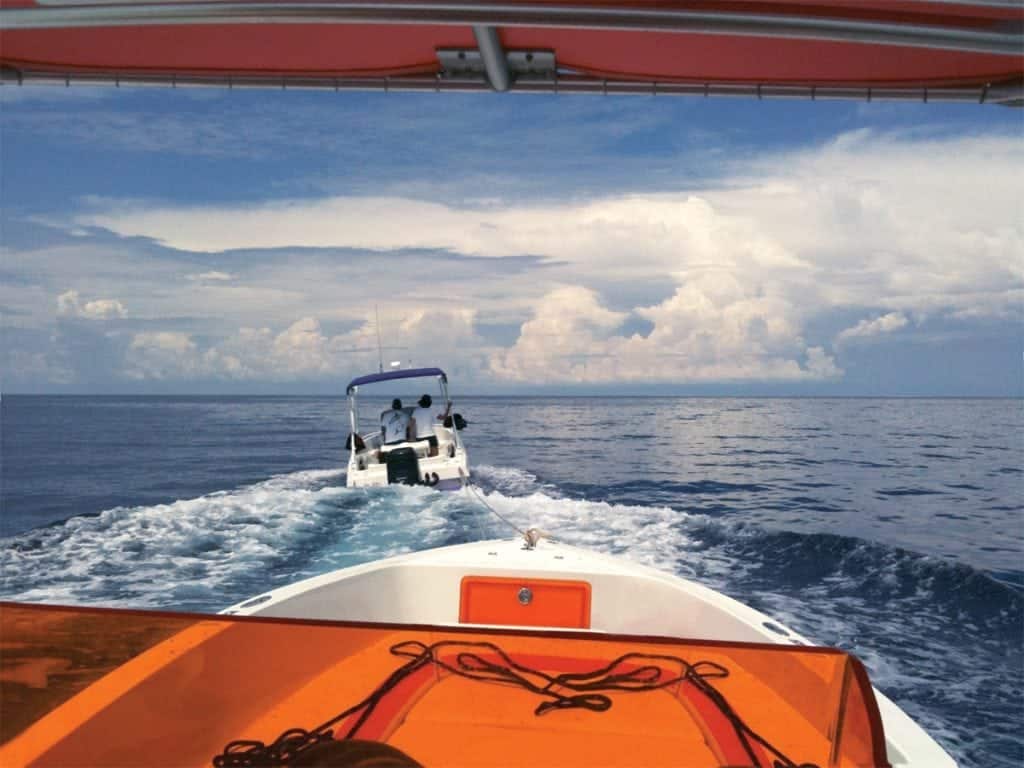South Padre Island and Port Isabel—where the fish and seafood are plenty and seasoning is most likely unnecessary
Perhaps the large territory comes to be associated with the arid deserts of the southwest, yet the Lone Star State also boasts a nearly 400-mile-long coastline on the Gulf of Mexico dotted with white sand beaches, littoral towns and a wealth of charming anchorages. Halfway down her coast, south of Corpus Christi and far from any interstate highways lies the mouth of the Laguna Madre, among the most remote and forgotten cruising grounds on the Gulf Coast.
Shielded by South Padre Island and stretching all the way south to Mexico, this narrow lagoon not only runs along the Gulf but is also a rarity: It is one of the saltiest bodies of water in the world, even saltier than our seas and oceans. With its shallow depth, few inlets to the Gulf of Mexico and lack of fresh water coming from the plains of South Texas, this unique ecosystem buffered on both sides by sand dunes has remained in a pristine state, her shores barely touched by developers. Cruisers who have discovered the Laguna Madre’s unique beauty lament South Padre Island’s reputation as a college spring break destination, yet the 34-mile-long island and the artsy town of Port Isabel at its furthest point south open their arms wide to cruisers throughout the year.
First discovered and mapped by Cabeza de Vaca and his Spanish conquistadors in 1528, South Padre Island was an encampment for an unusual tribe of Native Americans known as the Karankawas. They were said to wear rattlesnake rattles in their braided hair, cover themselves in alligator grease and were portrayed as skilled bow hunters. Myths about the tribe abound. The Spaniards believed them to be cannibals, yet their diet mainly consisted of seafood and oysters. They may also have been among the earliest people to fly fish. The Karankawas were eventually chased off South Padre Island by a group of European settlers who roped a cannon onto a donkey and trudged it across the sand dunes. While the loud cannon failed to frighten the tribe, Spanish missionaries reported that it was the “magical” donkey and its jumps from the cannon’s recoil that scared the native tribe forever into the depths of what would become Texas.
Today, billionaire Elon Musk’s SpaceX Corporation is building a new launch facility (for things other than donkeys) immediately south of Padre Island and Port Isabel. With the Tesla fortune seemingly pouring into the area, local government officials are already in the planning phases to upgrade coastal parks and other launch-viewing sites. Dockside restaurants such as Pier 19 in Port Isabel are perfectly located to provide unobstructed viewing areas for launches paired with delicious, locally caught seafood—do not miss out on the (rocket) Blackened Baja Tacos. This far south, expect a heavy Mexican influence on traditional Gulf cooking.
Plying the Gulf of Mexico and the Laguna Madre, locals—South Padre Island and Port Isabel count no more than 5,000 permanent residents—fish the waters for their prey offshore of the nearby and massive King Ranch. Expect bridge delays as horsemen lead massive herds of cattle to their next grazing lands. Charter boats head deep into the Gulf of Mexico to hunt for tuna, amberjack, kings, and other big-game fish, while inshore guides take you to hit the speckled trout and big reds along the coast.
In downtown Port Isabel the waterfront is the center of the action with the Tarpon, Port Isabel and Pelican Point marinas all within walking distance. Rustic seafood restaurants such as Will and Jacks Burger Shack & Beer Garden, Joe’s Oyster Bar and Dirty Al’s are filled with down-to-earth and artsy locals. Take time to chat with them as this quiet and low-key beach town is filled with stories and hospitality.
If your cruising itinerary includes an arrival here in October, the weather cools off and the town’s Day of the Dead festival on Halloween weekend explodes on Maxan Street; the township is in its full quirky splendor. Or, join the adventurers in June and arrive for the start of the Great Texas 300 when Hobie Cat sailors race the entire Laguna Madre up to Galveston in what is billed as the longest distance small-boat catamaran race in the world.
But the best reason to cruise south to the border is to experience the true untouched beauty of South Texas’ waters. The Laguna Madre is, indeed, a still-undiscovered boating natural wonder in America with her salty waters, near constant winds and predatory birds soaring from the plains. With sand-covered barrier islands protecting bays, fertile estuaries rumored to have sheltered the infamous pirate Jean Lafitte, and empty beaches stretching for miles along the Gulf of Mexico, the Texas coast should not be forgotten. These cruising and fishing grounds are just waiting for adventurous boaters and anglers to come and discover them. The fresh oysters and blackened redfish freshly landed are also waiting for your plate at the many restaurants and beachside eateries of this rustic island town. Then just dig your feet in the white sand, sip an adult beverage and watch the fiery sunset that customarily plays out across the deserts of Texas—but this time with surf rolling at your toes.
CRUISER RESOURCES
—Dockage—
Pelican Point Marina and RV Park
40 Tarpon Avenue • (956) 943-6464
Port Isabel City Dock
800 Pompano Street
(956) 943-2682
Tarpon RV Park & Marina
226 Basin Street • (956) 943-2040
tarponrvpark.com
—Eateries—
Dirty Al’s
201 S Garcia Street • (956) 943-3344 • dirtyalspi.com
Joe’s Oyster Bar
207 E Maxan Street • (956) 943-4501
Pier 19
1 Padre Boulevard • (956) 761-7437 • pier19.us
Will and Jacks Burger Shack & Beer Garden
413 E Maxan Street • (956) 640-7440
South Padre Island and Port Isabel—where the fish and seafood are plenty and seasoning is most likely unnecessary
Perhaps the large territory comes to be associated with the arid deserts of the southwest, yet the Lone Star State also boasts a nearly 400-mile-long coastline on the Gulf of Mexico dotted with white sand beaches, littoral towns and a wealth of charming anchorages. Halfway down her coast, south of Corpus Christi and far from any interstate highways lies the mouth of the Laguna Madre, among the most remote and forgotten cruising grounds on the Gulf Coast.
Shielded by South Padre Island and stretching all the way south to Mexico, this narrow lagoon not only runs along the Gulf but is also a rarity: It is one of the saltiest bodies of water in the world, even saltier than our seas and oceans. With its shallow depth, few inlets to the Gulf of Mexico and lack of fresh water coming from the plains of South Texas, this unique ecosystem buffered on both sides by sand dunes has remained in a pristine state, her shores barely touched by developers. Cruisers who have discovered the Laguna Madre’s unique beauty lament South Padre Island’s reputation as a college spring break destination, yet the 34-mile-long island and the artsy town of Port Isabel at its furthest point south open their arms wide to cruisers throughout the year.
First discovered and mapped by Cabeza de Vaca and his Spanish conquistadors in 1528, South Padre Island was an encampment for an unusual tribe of Native Americans known as the Karankawas. They were said to wear rattlesnake rattles in their braided hair, cover themselves in alligator grease and were portrayed as skilled bow hunters. Myths about the tribe abound. The Spaniards believed them to be cannibals, yet their diet mainly consisted of seafood and oysters. They may also have been among the earliest people to fly fish. The Karankawas were eventually chased off South Padre Island by a group of European settlers who roped a cannon onto a donkey and trudged it across the sand dunes. While the loud cannon failed to frighten the tribe, Spanish missionaries reported that it was the “magical” donkey and its jumps from the cannon’s recoil that scared the native tribe forever into the depths of what would become Texas.
Today, billionaire Elon Musk’s SpaceX Corporation is building a new launch facility (for things other than donkeys) immediately south of Padre Island and Port Isabel. With the Tesla fortune seemingly pouring into the area, local government officials are already in the planning phases to upgrade coastal parks and other launch-viewing sites. Dockside restaurants such as Pier 19 in Port Isabel are perfectly located to provide unobstructed viewing areas for launches paired with delicious, locally caught seafood—do not miss out on the (rocket) Blackened Baja Tacos. This far south, expect a heavy Mexican influence on traditional Gulf cooking.
Plying the Gulf of Mexico and the Laguna Madre, locals—South Padre Island and Port Isabel count no more than 5,000 permanent residents—fish the waters for their prey offshore of the nearby and massive King Ranch. Expect bridge delays as horsemen lead massive herds of cattle to their next grazing lands. Charter boats head deep into the Gulf of Mexico to hunt for tuna, amberjack, kings, and other big-game fish, while inshore guides take you to hit the speckled trout and big reds along the coast.
In downtown Port Isabel the waterfront is the center of the action with the Tarpon, Port Isabel and Pelican Point marinas all within walking distance. Rustic seafood restaurants such as Will and Jacks Burger Shack & Beer Garden, Joe’s Oyster Bar and Dirty Al’s are filled with down-to-earth and artsy locals. Take time to chat with them as this quiet and low-key beach town is filled with stories and hospitality.
If your cruising itinerary includes an arrival here in October, the weather cools off and the town’s Day of the Dead festival on Halloween weekend explodes on Maxan Street; the township is in its full quirky splendor. Or, join the adventurers in June and arrive for the start of the Great Texas 300 when Hobie Cat sailors race the entire Laguna Madre up to Galveston in what is billed as the longest distance small-boat catamaran race in the world.
But the best reason to cruise south to the border is to experience the true untouched beauty of South Texas’ waters. The Laguna Madre is, indeed, a still-undiscovered boating natural wonder in America with her salty waters, near constant winds and predatory birds soaring from the plains. With sand-covered barrier islands protecting bays, fertile estuaries rumored to have sheltered the infamous pirate Jean Lafitte, and empty beaches stretching for miles along the Gulf of Mexico, the Texas coast should not be forgotten. These cruising and fishing grounds are just waiting for adventurous boaters and anglers to come and discover them. The fresh oysters and blackened redfish freshly landed are also waiting for your plate at the many restaurants and beachside eateries of this rustic island town. Then just dig your feet in the white sand, sip an adult beverage and watch the fiery sunset that customarily plays out across the deserts of Texas—but this time with surf rolling at your toes.
CRUISER RESOURCES
—Dockage—
Pelican Point Marina and RV Park
40 Tarpon Avenue • (956) 943-6464
Port Isabel City Dock
800 Pompano Street
(956) 943-2682
Tarpon RV Park & Marina
226 Basin Street • (956) 943-2040
tarponrvpark.com
—Eateries—
Dirty Al’s
201 S Garcia Street • (956) 943-3344 • dirtyalspi.com
Joe’s Oyster Bar
207 E Maxan Street • (956) 943-4501
Pier 19
1 Padre Boulevard • (956) 761-7437 • pier19.us
Will and Jacks Burger Shack & Beer Garden
413 E Maxan Street • (956) 640-7440

